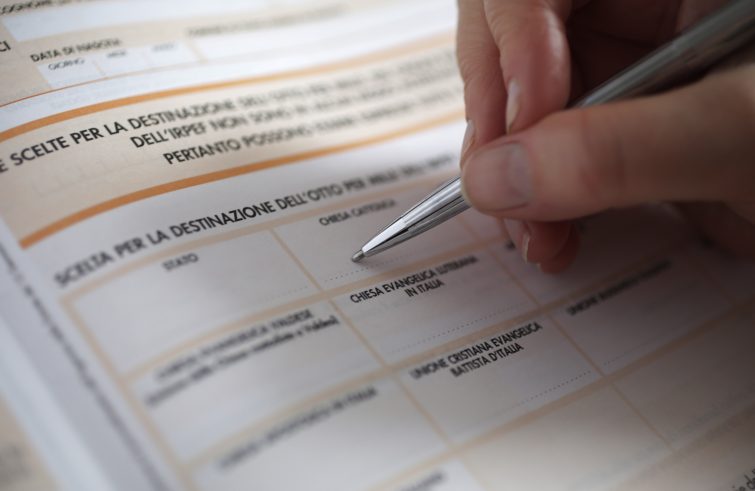
Massimo Monzio Compagnoni was appointed head of the Service for Promoting Economic Support to the Catholic Church two years ago, shortly after the outbreak of the pandemic. But he is not one who is easily discouraged, and in spite of the limitations that impacted on everyone’s life and work over the past two years, he pursued a renewal and digitalisation process of activities pertaining to this sensitive area in the life of the Italian Church. And while the website https://www.unitineldono.it/ has just been launched for deductible offerings for priests, the most challenging aspect of contributions under the Eight Per Thousand scheme is the drop in the number of taxpayers devolving their deductible offerings to the Catholic Church, according to the latest figures provided by the Italian Ministry of Economy and Finance.
What is the extent of the phenomenon?
The decline began sixteen years ago, but in 2020, during the first year of the pandemic, the number of taxpayers supporting the Catholic Church dropped from 13 to 12 million – from 77% of the previous year to just under 72%. At the same time, taxpayers choosing to devolve Eight for Thousand of their taxable income to the State rose from 2.8 to 3.8 million – a one million increase.

What is your explanation?
The pandemic has clearly played a decisive role; a great number of citizens felt it was necessary to support the State apparatus, which had been severely tried by a crisis in its healthcare system, perhaps without realising that, during the same period, the Church was providing care for almost two million people who had no other option.
Thus there is no reason to be alarmed?
None at all. However, it’s certainly an element that should be interpreted in the light of the steady decline over the previous fifteen years and which should prompt us to reflect as a community.
In which way?
Meaning that we must rediscover the fundamental importance of each taxpayer’s contribution, starting with families, parishes and dioceses. We must not expect campaign ads to be some sort of magic wand that triggers some unstoppable process. The Eight Per Thousand scheme (along with donations) are tools entrusted to our personal responsibility and commitment. Naturally this applies to each believer according to his or her role.
What are the main features of this year’s campaign, which is kicking off as we speak?
This year’s campaign was conceived in continuity with that of last year. Signing the Eight per Thousand tax deduction in favour of the Catholic Church, we said back in 2021, “is never just a signature; it is more, much more”. This year’s stories and faces (which, it should be remembered, are not those of actors but of the actual people involved in the projects financed under the Eight Per Thousand tax devolution scheme) encourage viewers to take a step forward, in an attempt to clarify what that “much more” consists of. It’s love – the campaign ads say – it’s a home, a family, hope or happiness for those who have lost everything. But it is also a way forward for those who lost their jobs and their dignity. And it’s a mission, for those who have attained professional fulfilment through thousands of funded projects. Last but not least, one of the ads reminds us that it is “our history”, as claimed by those who, thanks to Eight Per Thousand contributions, have witnessed the rebirth of their local church, which had long been in a state of disrepair.
A wide range of different circumstances reflect the various purposes for which the funds are allocated. Would you like to recall them?
Law 222 dated 1985 stipulates three purposes. These are: worship and pastoral needs – including maintenance of the sites where Christian communities meet; charitable initiatives, in Italy and in the poorest countries of the world; and finally, sustenance for our 33,000 priests serving in 227 Italian dioceses (300 of whom are also serving as fidei donum missionaries in five continents).
In conclusion, why and for whom is the Eight per Thousand contribution important?
It is important for everyone, of course, since the sums received (and duly declared) by the Catholic Church benefit the entire community, not just Catholics. However, I must point out that it is especially important for those taxpayers who do not exercise their right to avail themselves of the Eight per Thousand scheme because it is a complex procedure, because they are lazy or simply because they are unaware of it. This is still the case for a large number of people, especially those who are not required by law to file their tax returns. That’s why it is so important to remember that all signatures, irrespective of the income of the signatory, have exactly the same value. Every signed form is important. None excluded.












